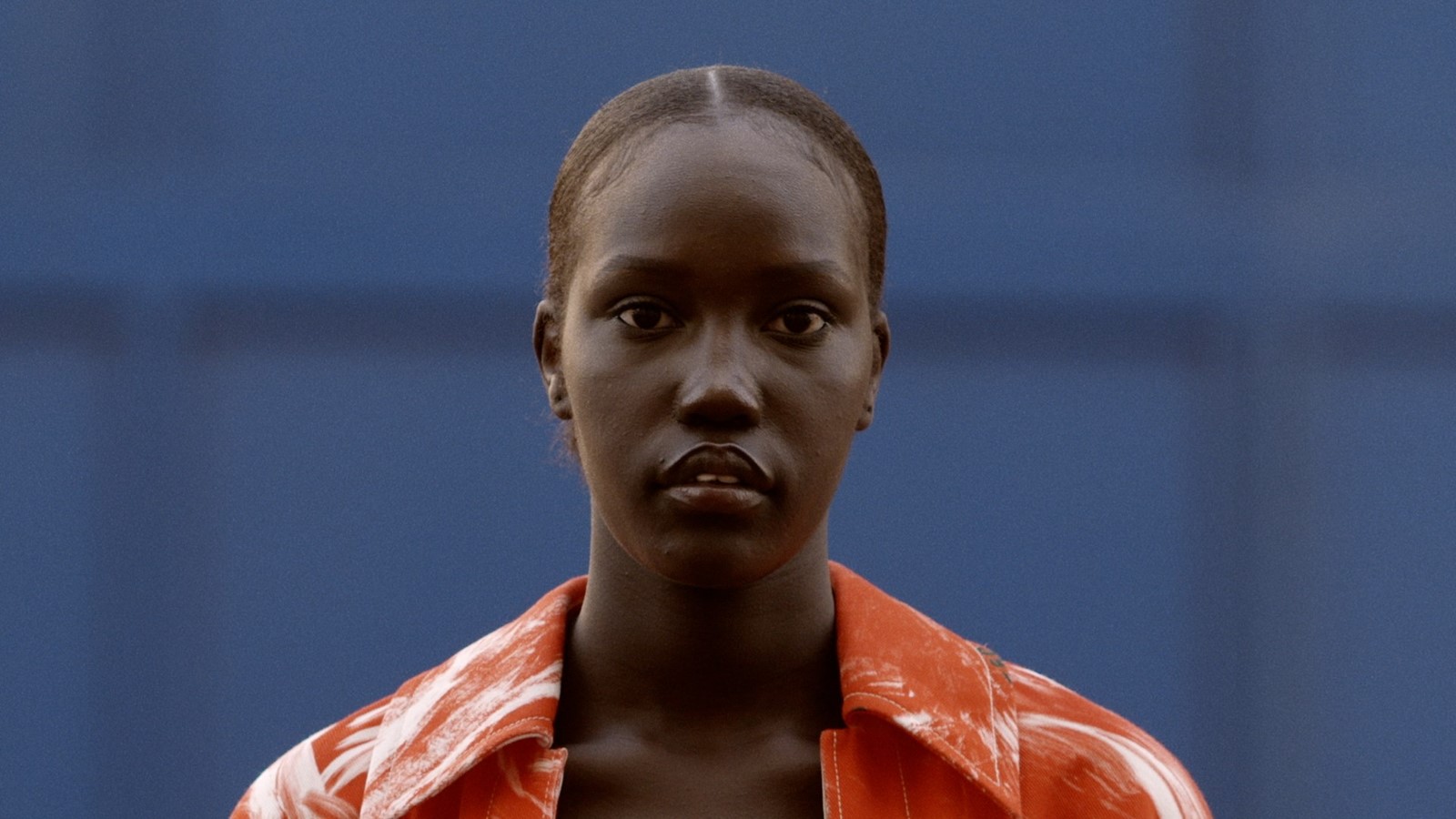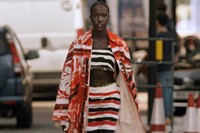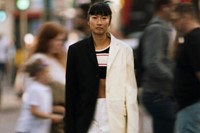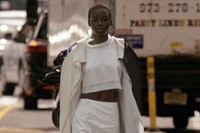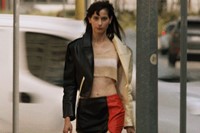This article is published as part of Dazed and AnOther’s Marnifesto campaign, created in collaboration with Marni:
Marnifesto was born from the Covid-19 pandemic, as an alternative solution to the catwalk show. Devised in 2020 by Francesco Risso, Marni’s creative director since October 2016, and artistic director Babak Radboy, who is best known for his groundbreaking work with Telfar, the project saw a community of 48 individuals, all creative, brought into Marni’s universe, where they took brand’s narrative into their own hands for its Spring/Summer 2021 collection. And, what started out as a one-time project, evolved into a whole new way of working – one which continues today in the latest iteration of the project, showcased on Dazed and AnOther.
In Marnifesto, Risso and Radboy handed over total control to each collaborator, which includes the likes of Sasha Lane, Crystallmess, Paloma Elsesser, Yves Tumor, Deem Spencer, Tom Rasmussen, Mykki Blanco and Moses Sumney, sending clothes out to them with the simple instruction to create whatever they pleased and put it on film. Through doing this, the pair have created what they call a “social experiment” – where the process of creating is much more exciting than a ‘finished’ result.
Here, the pair discuss their working relationship, how Marnifesto came to be, and why this method of working feels so appropriate for Marni’s present and future.
Francesco Risso: We first met each other at the office. Did we? Yes. We had a first encounter at the Marni office through friends of ours, in 2019? Before?
Babak Radboy: It couldn’t have been ...
FR: No, actually. it must have been before because you had come to the other shows. Two years ago, something like that. I have to confess, I immediately fell in love with Babak. I was like, “when are we going to see each other again?” Basically it started from there. And then we reconnected I guess before the end of 2019, when we started a creative dialogue. I really wanted to work with Babak – or just even be friends somehow. I truly liked the work he has done in the past, and talking to him was like seeing through an infinite tunnel. I guess then we started talking November 2019?
“This is what Marnifesto does: it’s about the people. In a moment where everyone has the impossibility of being together, we wanted to be together. We wanted to have people expressing each other through their own ways and skills” – Francesco Risso
BR: It was three months before the Autumn/Winter 2020 men’s show.
FR: We spent a lot of time together which was really beautiful. Babak came to visit us many times. We spent a lot of time together, testing each other.
BR: When we met, I was in this funny place – I know how to be an art director, in the professional sense. But I was having this experience of doing it in a different way. I felt like it was a bit of a hustle, you know? Professionalism in general is a bunch of people hustling each other, and then hoping it works in the end. I wanted to work on the basis of something closer to friendship. I was invited to pitch to Marni, and instead I pitched that we spend three months together, and I could observe your process, so I had something to say about it.
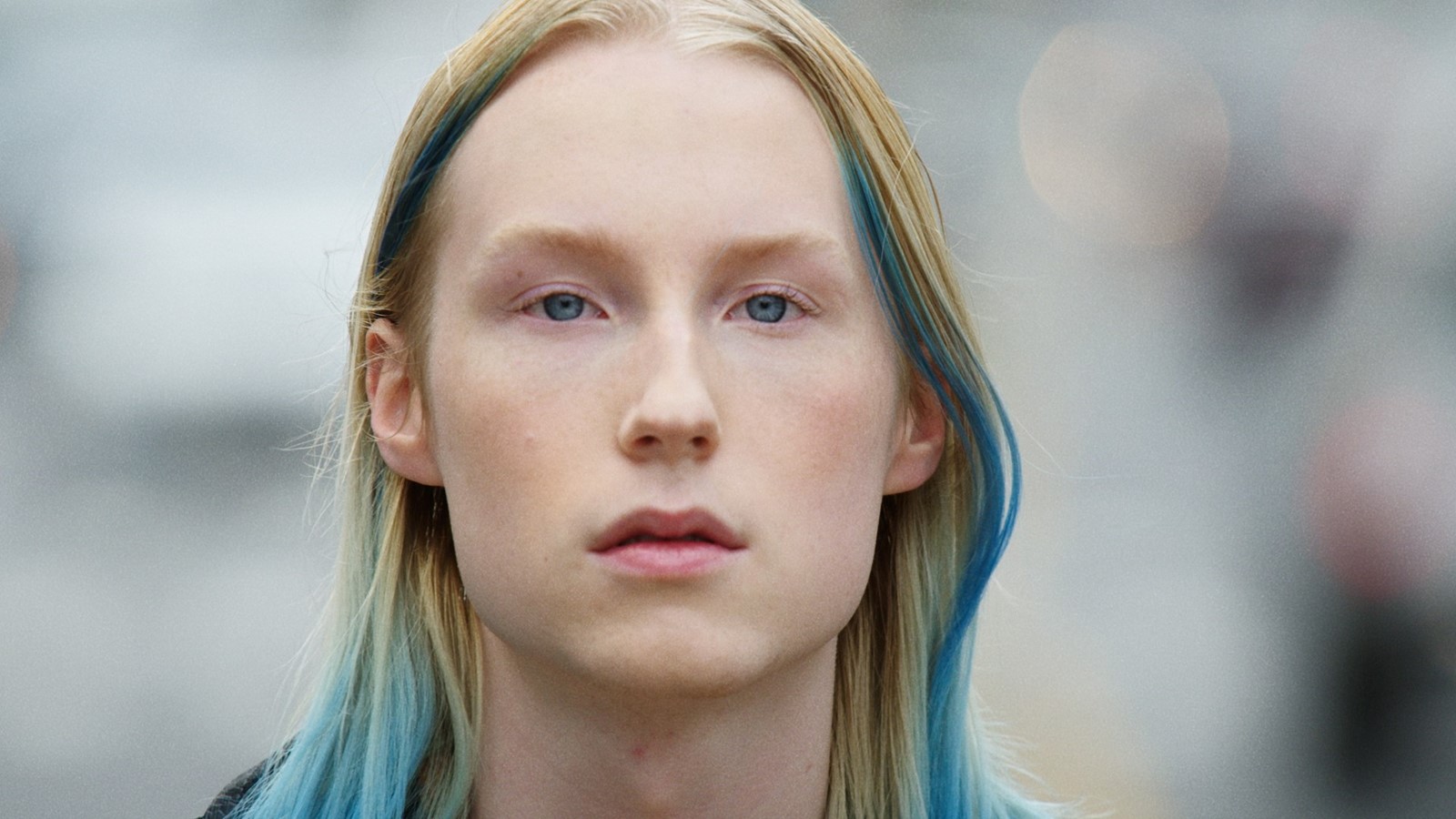
FR: To me, this was an incredible starting point. So we spent a lot of time at home, laying on the couch, just talking. Really diving into ideas. It was definitely a special approach that I didn’t expect, but I immediately thought: “yes, this is how it should always be”.
BR: Everything that you see on a fashion moodboard is a result of a social process, more than a design process. You can't have material culture without the culture part.
FR: Definitely. It seemed like the stars had put us together at the right moment in time. Because, in a way, there was not a better moment to really investigate the social aspect of fashion. This is what Marnifesto does: it’s about the people. In a moment where everyone has the impossibility of being together, we wanted to be together. We wanted to have people expressing each other through their own ways and skills.
BR: That time we spent together, I was really surprised by what I was seeing in the design process at Marni, because it was almost like a weird art commune in the 70s. It was so loose, and yet so structured. It was based on narratives, and fantasies, and tangible processes. I asked myself “what is Marni?” – and I looked in the studio and I was like “it’s this”. It’s this process of making, and the human relationships found in that process.
When you tell a story like that, it can’t be that you’re looking for a final product: it’s that you’re looking for a process. The final outcome can’t be predetermined. You have to start off a social process, and it has to involve more and more people. The ideal situation is that there’s no difference between the person who’s eventually wearing Marni, and the people who are making Marni – because you’re making it together.
FR: We started writing letters, between me, the Marni team, the people that had been modelling for Marni, the photographers, musicians ... Any people who were in our circle at all. Then all these letters became the starting point in making something together.
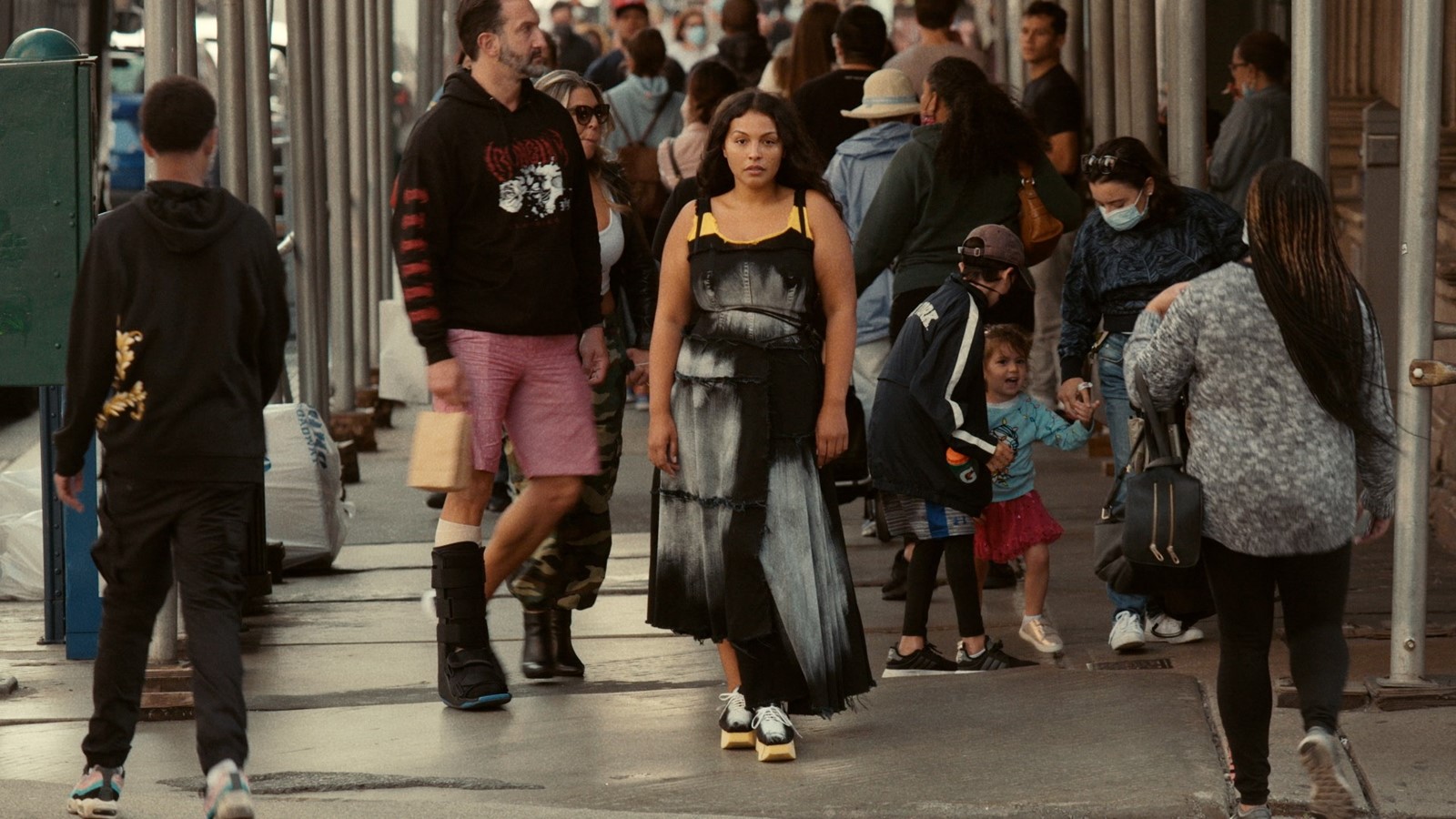
Marnifesto felt like a blueprint for the way we would work together in the future. On a personal level, as a creative, I find extreme joy in learning from others. It’s not just about challenging yourself for the best design. And, it doesn’t apply to today’s world. When you have the chance to build something with multiple hands, I find that very fascinating.
BR: It’s also about lusting after the unknown. When you lust after the unknown, you can’t proceed according to a plan in quite the same way. It’s all based on the process.
FR: You get so many great surprises.
“When you specifically want to see something you haven’t seen before – what you want is the thing you don’t know. You’re exhausted from what you know. Show me something that I don’t even know how I feel about!” – Babak Radboy
BR: When you specifically want to see something you haven’t seen before – what you want is the thing you don’t know. You’re exhausted from what you know. Show me something that I don’t even know how I feel about!
FR: The runway feels quite constrictive. You don’t really allow the dialogue to take place. With Marnifesto, I had the chance to enjoy the clothes in a greater number of days. Normally the clothes go off all over the world. We had ten days before the launch, and that’s never happened in my fashion career: ten days to look at the clothes through somebody else’s point of view.
This is a dialogue that doesn’t happen when you’re doing a proper fashion show: you have three days of fittings, deciding the make up, then out for nine minutes. Whereas with Marnifesto it was like a continuous exploration. The runway show limits collaboration. It would be interesting to challenge that side more and more, at least on our behalf.
BR: From my end, whatever concept you have for a show, you explain to the models an hour before the show. With Marnifesto, I had to talk to every single model, because it entirely depended on our understanding of each other. I spent 48 hours asking them all what they want and who they are, and just talking. There really wasn’t anything to it but finding the time to make a connection with a person, so that I could trust them. I had to break them out of the idea that they were interviewing for a job – in fact, they hold my life in their hands, not the other way around. I don’t know what they’re going to do, only they know! And that as a social process was amazing, and really emotional.
That empty status of a model as a placeholder is already disappearing – we want to know who that person is. The catwalk is a forum for discernment and judgement. Which isn’t the best environment to show creativity.
FR: I keep thinking about all the people who did our shows from the beginning, and how it’s become a ‘pack’ in some sense. And how much everyone who comes back and works with us, really has been an inspiration for all that we do.
BR: I think Marnifesto is going to be something that evolves over time. It’s the type of thing that is going to grow really organically, and that people will notice that it exists after it exists. Because it needs to have a social effect. And I think you already start to see some of that in how Marni is beginning to circulate in the popular vernacular. People making songs about Marni, for example. It magically starts to have this social echo, because there is a sense that something is happening there.
A lot of the people that we did [the latest edition] of Marnifesto with, we’re still talking to. Just for example, the video we did with Yves Tumor, it was just staying in touch. It was not asking for his grandest vision, just literally, “what do you do?” So we just sent him clothes, with no further instruction. Just do what you do!
FR: Because we work a lot with our hands, disrupting things, in a very sensorial way. I’m so looking forward to making it more physical, in a kind of way. This action started in a way where we had to stay apart, and fight for a connection. Now I’m very curious about gathering back all of us into that physical state that’s going to be possible soon. I’m looking forward to that! Hanging out together, that’s my next mission.
